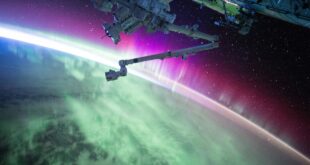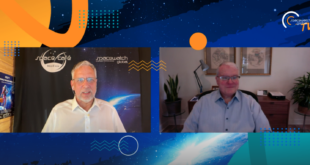Our Space Café “33 minutes with Kevin O’Connell – from zombie statistics to the trillion-dollar space economy” took place on Tuesday, 27th June. Kevin O’Connell has had a diverse career in many sectors in commerce and intelligence. He has spent over three decades working on space commercialisation, including in his role as the Director of the Office of Space Commerce with the US Department of Commerce.
Role of private finance
One of the key aspects of this ‘33 minutes’ was the discussion of the role of private finance in the space sector. The space sector has had decades of government investment, but in recent years private capital has been an essential catalyst in driving space activities. O’Connell says ‘the role of private finance has been absolutely pivotal in fuelling the space economy”.
The geopolitical environment that we’re living in is necessarily impacting our ability to reach global agreement on these things.
However, private finance for the space industry dropped rapidly in 2020. This was due to global macroeconomic conditions resulting in less investment, but also in the space-specific area ‘we can look at the SPAC craze and some of the valuations that took place there’. Fortunately, in the early-to-mid 2023, there has been an uptick in private investment. “The best numbers we have so far in 2023, for the first quarter, so cautionary note there, is at about an annualised $10 million”.
The space industry is likely to continue to see a rise in private investment as it is shifting from a risk investment to a value investment.
Space start-ups
Start-ups that really understand the business aspects and their competition in the market are more likely to get funding in Europe. There has been some availability of pandemic relief funds in Europe that are still flowing into the economy. Alongside this, the European Space Agency as well as others are having unprecedented levels of investment.
Entrepreneurs are pursuing innovation, they are inspired by the benefit it could create on Earth or out in space, but they are also trying to create efficiencies. In the past if you were an entrepreneur with an idea, you had to wait five years for a launch, and you had to spend a lot of money to launch. However, in today’s environment you can develop an idea and get it into space within six months. In this faster paced environment ideas can be improved and lessons learned from past launches much more rapidly.
The role of private finance has been absolutely pivotal in fuelling the space economy.
Lunar economy
2022-2023 might be marked as the beginning of the lunar economy. There are 100 missions planned for the moon over the next decade, O’Connell informs. It could be that 20-25% of these don’t succeed, but there will still be a tremendous amount of information gathered about the moon over the coming years.
Space debris
Space debris is a fast-changing problem which requires the private sector as a key element to leverage solutions. O’Connell says that in the US there are probably a dozen companies focused on space debris, creating a vibrant ecosystem. Last week at the Paris Air Show, there were announcements of both private and government activities in this area. “The geopolitical environment that we’re living in is necessarily impacting our ability to reach global agreement on these things.”
Upwards of 100,000 satellites have been licensed to fly by the end of this decade. In this rapidly changing market, the private sector is an important toolkit. ‘Once we get space safety in tow and improve people’s ability to stay safe in space, I think that gives way to a whole host of other foundational services, mostly commercial, in my view, that will form the basis for growth in the space economy”.
To listen to the Space Café WebTalk’s insights, you can watch the full program here:






